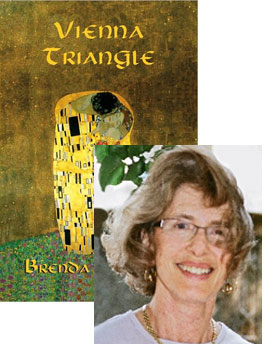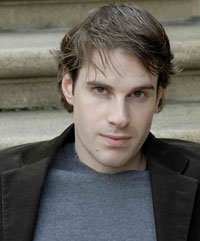Author2Author: Sylvia Brownrigg & Brenda Webster
When Brenda Webster responded to my invitation to do a guest essay for Beatrice by suggesting a Q&A with Sylvia Brownrigg, I was all for it—I interviewed Brownrigg a decade ago and admired her work greatly, and the themes of her latest novel, The Delivery Room, seemed to go well with Webster’s Vienna Triangle. The two authors will be making a joint appearance at Rakestraw Books (Danville, California) on March 19.
Sylvia Brownrigg: In writing a novel about Freud, how did you come to choose Viktor Tausk, his doomed protégé, as one of the major figures of your interest?

Brenda Webster: The idea for the novel came to me in Rome. I was reading Thomas Mann’s Lotte in Weimar about how Goethe sucked the life out of everyone near him and used it for his own purposes whether son, secretary or potential character. This sounded similar to something I had read years before about Freud and Tausk and made me wonder if genius was in general incapable of tolerating great talent. Since my mother thought of herself as a genius this had personal resonance as well.
SB: I am guessing from your memoir, The Last Good Freudian, that you drew on your own family’s relation to some of the historical figures in Vienna Triangle. Did you consciously use certain details from your own family history?
BW: Helene Deutsch, a prized member of Freud’s inner circle figures prominently in my book. My mother had been a patient of Deutsch’s in Vienna, after a suicide attempt, and seen Deustch later as well, and I had been told that she helped my mother with her sadism towards men and made it possible for her to marry. What I wasn’t told until near her death was that Deutsch had abruptly terminated her after a year saying rather brutally that some people just didn’t cut it. I hadn’t thought of this parallel with Tausk until you asked!
5 March 2009 | author2author |
Author2Author: Tom Dolby & David Levithan
Tom Dolby‘s The Trouble Boy and David Levithan‘s Boy Meets Boy came out within a year of each other, and about a year after that, the two debut authors realized they were fans of each other’s work. (Well, Dolby already knew he liked Levithan’s book, and then Levithan sent Dolby a fan letter.) They’ve both recently published new books—The Sixth Form for Dolby, and How They Met (a collection of stories about love, as opposed to “love stories”) for Levithan. Dolby interviewed Levithan for GayWired earlier this month, but Levithan had some questions for Dolby as well, and here we are.
 Tom Dolby: In the past week, I’ve been catching up on some of the other young adult books you’ve written: from Marly’s Ghost to Nick and Norah’s Infinite Playlist to Naomi and Ely’s No-Kiss List, the last two of which you wrote with your friend Rachel Cohn. It’s interesting because those are two very different types of books. Were they different in their conception? Did you always do the guy parts and Rachel did the girl ones?
Tom Dolby: In the past week, I’ve been catching up on some of the other young adult books you’ve written: from Marly’s Ghost to Nick and Norah’s Infinite Playlist to Naomi and Ely’s No-Kiss List, the last two of which you wrote with your friend Rachel Cohn. It’s interesting because those are two very different types of books. Were they different in their conception? Did you always do the guy parts and Rachel did the girl ones?
David Levithan: I think Nick and Norah was the more spontaneous of the two, because we didn’t know what the hell we were going to do. We were just bouncing chapters back and forth. For Nick and Norah, we switched off girl-guy, but for Naomi and Ely, there are other characters, so it was every other chapter. I did Naomi’s part once. We didn’t plot it out. I would write my chapter, I would email it to her, and she would send me back her chapter. Not only did I not know what was going to happen, but I didn’t even know who was going to be speaking. It was a different experience because Nick and Norah is so much about the chemistry between the characters while Naomi and Ely is the opposite of that—it’s about two people who were really close who are falling apart.
So I have to ask you: I knew because of The Trouble Boy that you had a lot of teen fans. With The Sixth Form, were you conscious of thinking about teen readers being let in to a world that they might not have experienced? Sometimes adult books about teen characters are so awash in nostalgia and distance, but you really managed to make it feel contemporary. It had that ring of truth.
25 February 2008 | author2author |

 Our Endless and Proper Work is my new book with Belt Publishing about starting (and sticking to) a productive writing practice.
Our Endless and Proper Work is my new book with Belt Publishing about starting (and sticking to) a productive writing practice. 
